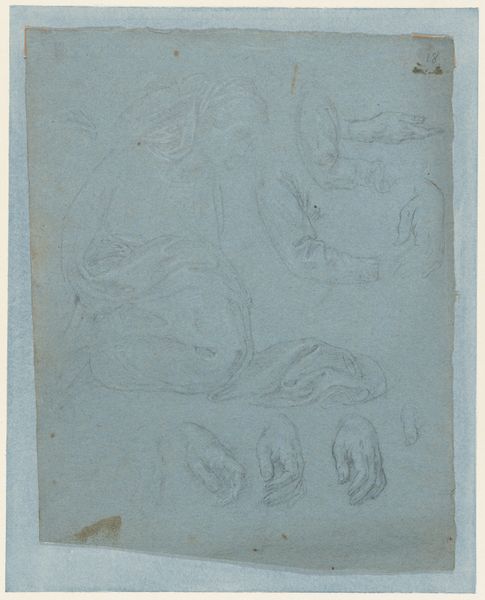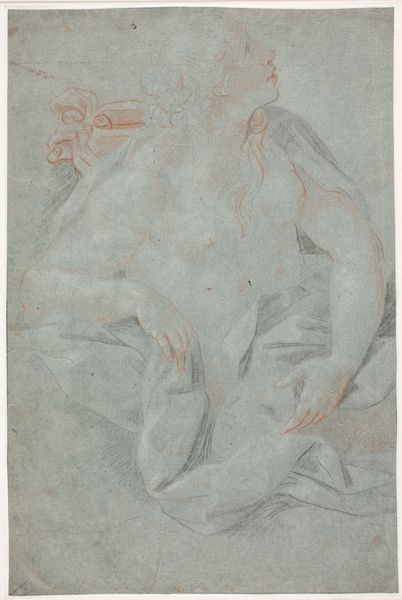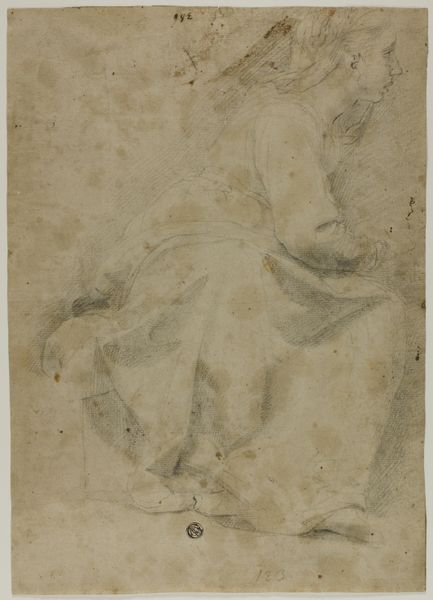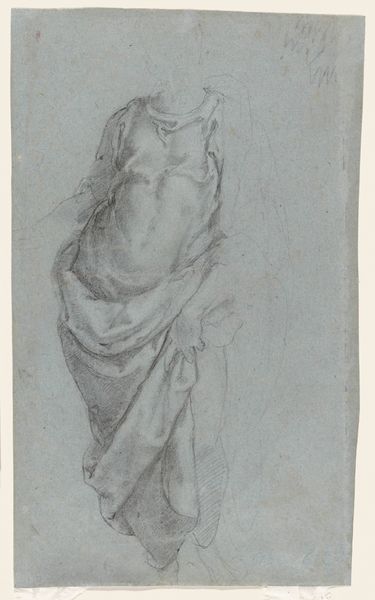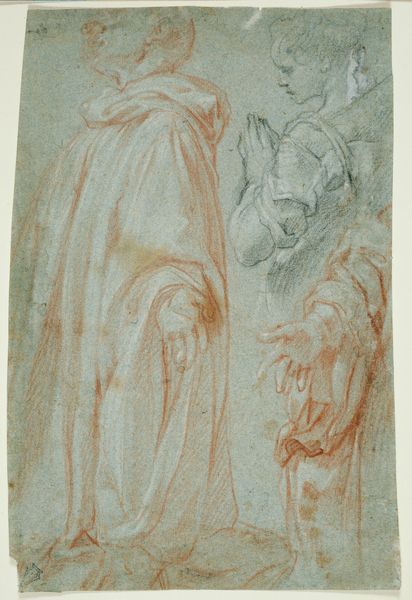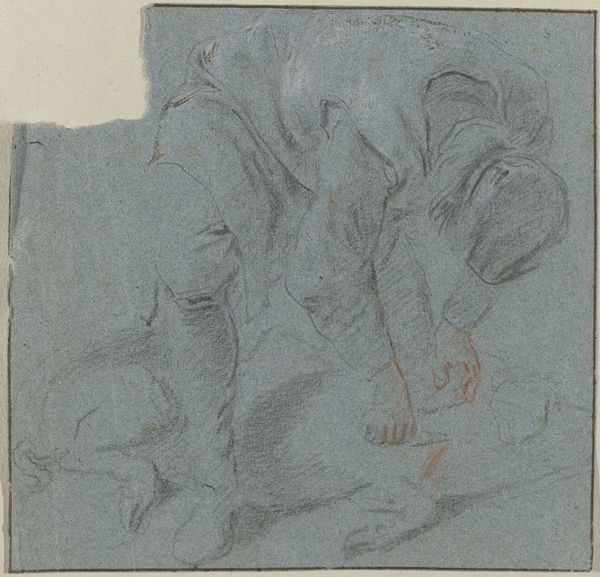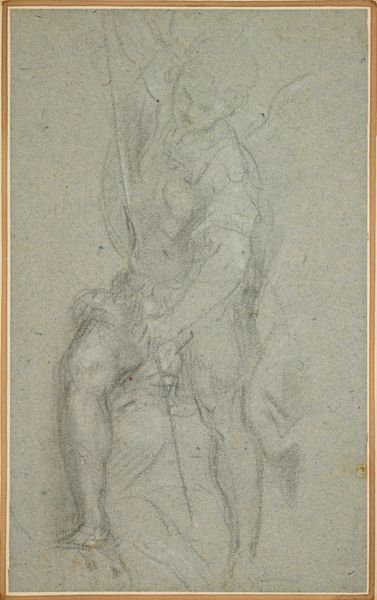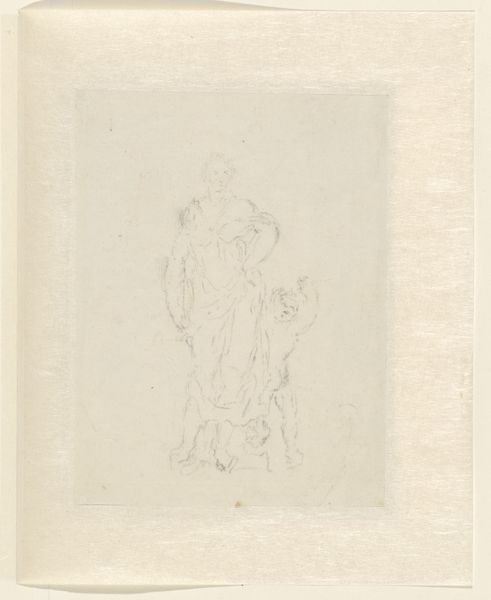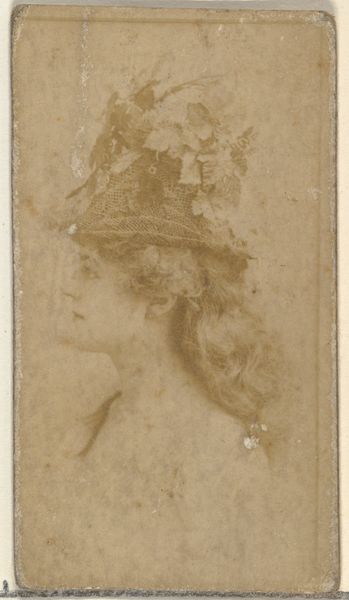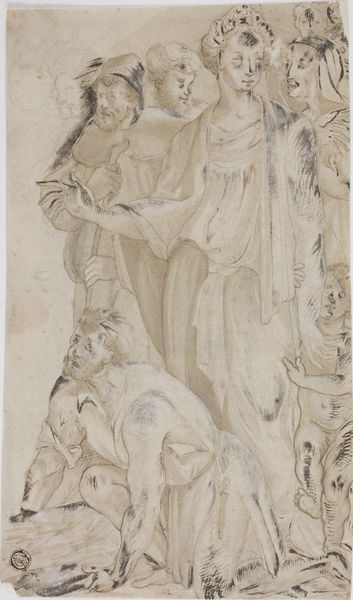
drawing, charcoal
#
portrait
#
drawing
#
charcoal drawing
#
figuration
#
form
#
11_renaissance
#
charcoal art
#
charcoal
#
charcoal
#
italian-renaissance
Dimensions: 263 mm (height) x 172 mm (width) (bladmaal)
Curator: Here we have Jacopo Palma il Giovane's "Three studies of a right hand," dating from the late 16th to early 17th century. It's rendered in charcoal. What's your immediate impression? Editor: Ethereal. They almost float against that muted gray-blue paper. Hands, particularly in Renaissance art, are so charged. There's a spiritual aspect that resonates even today. Curator: Yes, the composition, the chiaroscuro... it’s quite striking. Note how the light plays across the forms. Palma isolates the hand, allowing us to analyze its structure, its gestures in meticulous detail. Editor: Absolutely. Consider the symbolism: the hand as an instrument, a tool for creation, but also connection, benediction. These studies feel like Palma is trying to understand not just anatomy, but the essence of what the hand *means*. The positions suggest benediction. Perhaps he had religious intent? Curator: Indeed, we observe a dynamic interplay between anatomical observation and artistic expression. The varied perspectives of the hands demonstrate the artist's keen awareness of spatial relationships and form, without explicitly indicating divine intervention. Note how he masterfully employs charcoal to render not just form, but texture. There’s an inherent tension between line and shadow. Editor: Yet each hand, presented individually, also evokes its own history and use, so that the viewer’s cultural memory activates, understanding the hand to signal peace, labor, prayer, love, or authority. Palma captures all of those potentialities. Curator: Fascinating. The composition emphasizes formal elements while prompting engagement with implied meanings, resulting in a visually and intellectually complex representation. Editor: What I appreciate is that it remains, in its core, a preparatory sketch – an unveiling of process that is quite lovely. It feels as if we are witnessing his first wonderment at human construction. Curator: A study of form indeed, a perfect Renaissance celebration of human skill. Editor: The work certainly speaks across the centuries!
Comments
No comments
Be the first to comment and join the conversation on the ultimate creative platform.
